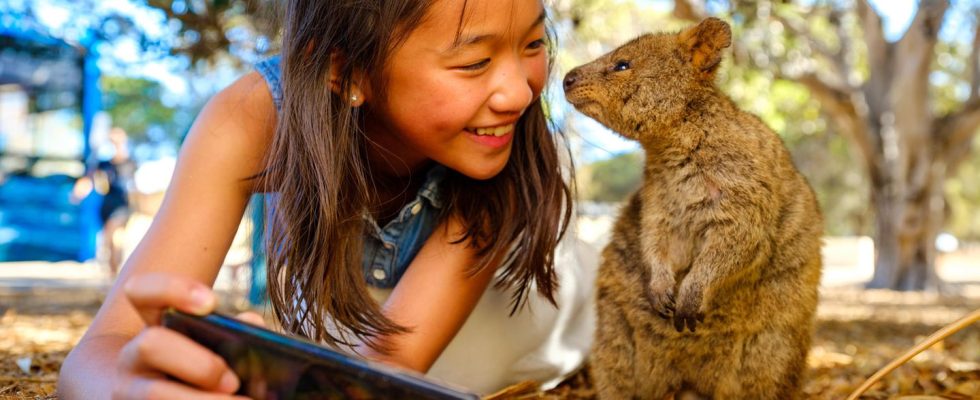It was a biological misunderstanding that gave the island its name: the Dutch sailors at the end of the 17th century called their discovery the “Rotte nest”. Because the local quokkas, the short-tailed kangaroos, thought they were a large species of rat. These cute creatures are particularly delicate kangaroos.
Visitors come across the more nocturnal animals just a few steps after reaching the pier in Thomson Bay on one of Fremantle’s ferries. The photogenic marsupials hop silently along the paths and on the restaurant terraces in search of something to eat and create a relaxed atmosphere right from the start – and they represent peaceful coexistence between humans and animals. No one touches or feeds the quokka. True to the motto that can be read on many signs: “Don’t feed the locals.”
The Aborigines call the 19 square kilometer island, which can be compared in size to Langeoog off the coast of North Frisia, Wadjemup. But the Whadjuk Noongar, who lived here up to 30,000 years ago, left the island 6,500 years ago when sea levels rose and the area was separated from the mainland.
Rottnest Island is actually called Wadjemup
Due to its isolated location, European colonialists turned Wadjemup into a prison island for Aborigines from the mainland. The prisoners even had to build their own cells out of the limestone quarried here. The cemeteries and the exhibition in the Wadjemup Museum tell the dark chapter of the island under the theme “The past is not buried”.
In the 20th century, during the two world wars, Wadjemup was used as an internment camp and a place for prisoners of war. Tourism only took off decades later. The demand has long been greater than the supply, and the accommodation in the small holiday homes is raffled off before the start of the season. The island was booming, especially during Australia’s strict Corona policy: Wadjemup was one of the few destinations that was an option for residents of the state of Western Australia.
The most recent exhibit in one of the museum display cases dates from this time: a scorched metal bucket with the inscription of the Mexican beer brand Corona. It was used by two Aborigines for a smoke and fire ceremony when Wadjemup was spiritually prepared as a new isolation place: In March 2020, the passengers of the Transocean Cruises cruise ship “Vasco da Gama” from Offenbach, which was supposed to moor in Fremantle, had to first go into quarantine for fourteen days on the island that was cleared for these purposes.
The beer cooler lies next to flint tools found on Wadjemup, estimated to be between 13,000 and 40,000 years before Christ.
Further information: www.rottnestisland.com

